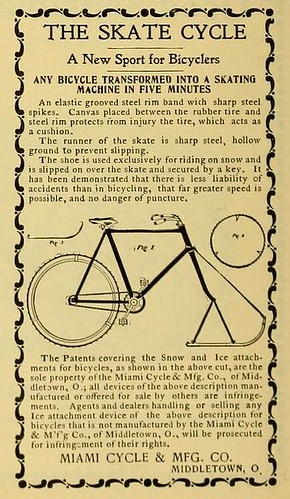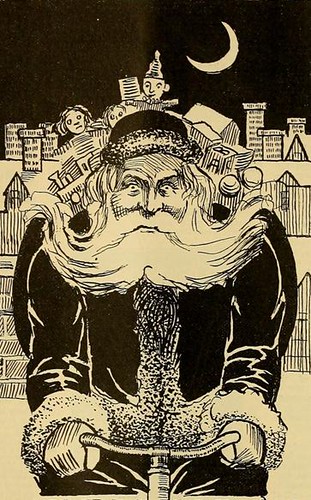
A small ad from the December 24 1896 issue of Cycling Life - directed at the cycle business and not end consumers, this company is hoping dealers will sell this innovative approach to getting around in the snow and ice.
I don't think this would work well on snow - the "skate" would sink down and scrape whatever was below. Perhaps more importantly the front wheel spinning must contribute something to keeping the bike upright. And what would the steering be like? Today I rode home after about two inches of snow fell in Washington, about eight miles of snow covered bike trails. It's tiring because of the need to stay balanced as the wheels encounter hardened snow. This looks like it would be much worse.
